- What is a Brand & Why is it Important?
- Elements of a Brand: Mission, Vision, and Values
- Types of Brands and their Significance
- Branding Strategies: Private, Multiproduct, and Mixed
- Brand Image and Its Impact on Perception
- Building a Strong Brand
- Frequently Asked Questions
- Understanding Brand Equity: Definition and Elements
- Importance of Brand Equity
- Evolution Of Brand Equity In The Digital Age
- Brand Equity in the Global Marketplace
- Measuring Brand Equity: Metrics & Methods
- Managing Brand Equity: Salient Elements
- Building & Managing Brand Equity: Best Practices
- The Future of Brand Equity
- Conclusion
- Frequently Asked Questions
- What is Brand Management?
- Importance of Brand Management
- Benefits of Effective Brand Management
- Principles of Brand Management
- Strategies for Successful Brand Management
- Brand Management vs. Marketing
- Conclusion: The Power of Brand Management
- Frequently Asked Questions
- Importance of Brand Image in Marketing
- Key Elements of a Successful Brand Image
- Brand Image vs. Brand Identity: Key Differences
- Measuring and Monitoring Brand Image
- Strategies for Maintaining and Enhancing Brand Image
- The Power of a Positive Brand Image
- FAQs
- What is Brand Awareness and its Importance?
- Benefits of Brand Awareness
- Brand Awareness Strategy: Some Tried & Tested Methods
- Some Creative Ways to Boost Brand Awareness
- Significance of Brand Awareness
- Conclusion
- Frequently Asked Questions
- Porter's 5 Forces Model: What Is It?
- Porter's 5 Forces Model: How To Use It?
- Common Barriers to Entry
- Evaluating Suppliers' Negotiating Power
- Understanding the Bargaining Power of Buyers
- Analyzing Threat of Substitute Products or Services
- Rivalry amongst Competitors (Old & New)
- Drawbacks of the Five Forces Model
- Conclusion
- Frequently Asked Questions
- How Well Do You Know Porter’s 5 Forces? Take A Quiz!
- What is Buying Motive?
- Types Of Buying Motives
- Importance Of Buying Motives
- Six Universal Buying Motives
- Identifying Buyer's Motives
- Utilizing Buying Motives In Sales
- Challenges In Interpreting Buying Motives
- Frequently Asked Questions (FAQs)
- 💸 Think You Know Buying Motives? Take A Quiz!
- Understanding the Elements and Importance of Brand Equity
- What are brand equity models?
- Comparing Keller's and Aaker's brand equity models
- Real-world examples of brand equity in action
- Strategies for building strong brand equity
- Key takeaways on brand equity models
- FAQs
- Mastered Brand Equity Models? Prove It!
- What Is Brand Positioning?
- The Importance of Brand Positioning for Businesses
- Creating A Brand Positioning Strategy: Step-By-Step Process
- Measuring the Success of Your Brand's Positioning
- Examples of Strong Brand Positioning in the Market
- Types of Brand Positioning Strategies
- Social Media Engagement: A Key Positioning Strategy
- What Makes a Good Brand Positioning Strategy?
- Conclusion
- Frequently Asked Questions
- Quick Quiz to Test Your Knowledge of Brand Positioning!
- Brand Personality: Definition & Importance
- How to Define Your Brand Personality?
- Choosing Your Brand Personality Attributes
- Dimensions of Brand Personality Framework: The Aaker Model
- Incorporating Core Values Into Your Brand Personality
- Examples of Brand Personalities in Action
- Conclusion
- Frequently Asked Questions
- Brand Personality Quiz– Let's Go!
- What is Brand Identity?
- What are the Key Components of Brand Identity?
- Importance & Benefits Of Brand Identity
- Importance of Unique Visual Elements in Brand Identity
- Communication Style and Tone of Voice in Brand Identity
- Steps on How to Create a Brand Identity
- Brand Identity Example- Coca-Cola
- Examples of Strong Brand Identities in Different Industries
- Consistency in Online and Offline Branding
- Conclusion
- Frequently Asked Questions (FAQs)
- Think You Know Brand Identity? Take A Quiz!
- Brand Identity Prism: Understanding The Concept
- Role Of Culture In Brand Identity Prism
- Brand Identity Prism: Visualizing The Sender & Receiver
- Benefits Of Brand Identity Prism
- Examples Of Brand Identity Prism In Action
- Brand Identity Prism: Key Takeaways
- Frequently Asked Questions
- Take This Brand Identity Prism Quiz!
- What is Market Segmentation?
- Importance of Market Segmentation
- The Market Segmentation Process
- Types of Market Segmentation
- Common Challenges in Implementing Market Segmentation
- Overcoming Challenges in Market Segmentation
- Conclusion: Understanding The Impact
- Frequently Asked Questions (FAQs)
- Test Your Market Segmentation Knowledge– Take This Quiz!
- What is Brand Loyalty? Meaning & Significance
- Characteristics of Brand Loyalty
- Measuring and Tracking Brand Loyalty
- Importance of Brand Loyalty for Companies
- Brand Loyalty Examples and Types
- Strategies for Building Brand Loyalty
- Differentiating Brand Loyalty from Customer Loyalty
- Conclusion: The Power and Importance of Brand Loyalty
- Frequently Asked Questions
- Think You Know Brand Loyalty? Take A Quiz!
- Brand Extension Meaning
- Brand Extension Types
- Understanding Brand Line Extension vs. Brand Extension
- The Impact and Potential of Brand Extension
- Successful and Unsuccessful Brand Extensions Examples
- Summing Up
- Frequently Asked Questions
- Quiz– Test Your Brand Extension!
- Step-by-step guide on how to build a brand from scratch
- Benefits of a Strong Brand
- Examining Successful Brand-Building Examples
- Summing up
- Frequently Asked Questions
- Know How to Build a Brand? Prove it With This Quiz!
- What is Marketing Mix?
- Understanding the 4 Ps of Marketing
- The Seven Ps of Marketing
- Implementing the Marketing Mix in Business
- Amul: Example of Successful Marketing Mix Implementation
- Exploring Alternative Marketing Mix Models
- Conclusion
- Frequently Asked Questions (FAQs)
- Mastered the Marketing Mix! Test Your Knowledge Now
- Defining Brand Value and its Importance
- Measuring Brand Value
- Factors that Make a Brand Valuable to Customers
- Examples of Brand Value from Real World
- Brand Value Versus Brand Equity
- The Impact of Brand Value on Business Marketing Strategies
- Conclusion: The Significance of Brand Value
- Frequently Asked Questions
- How Much Do You Know About Brand Value? Take This Quiz!
- Definition Of Co-Branding
- Different Types Of Co-Branding
- Benefits & Advantages Of Co-Branding
- Strategies For Successful Co-Branding Partnerships
- Notable Successful Co-Branding Examples
- Factors Influencing Co-Branding Success
- Frequently Asked Questions (FAQs)
- Co-Branding Quiz: Test Your Expertise!
- What is a Target Market?
- Importance of Target Market: Why Do We Need It?
- Types of Target Market
- The Target Marketing Process
- Primary Research for Target Markets
- Leveraging Target Market Segmentation for Sales
- Conclusion
- Frequently Asked Questions (FAQs)
- 🎯 Do You Know Your Target Market? Take the Quiz!
- Importance of Understanding Consumer Decisions
- Traditional vs Contemporary Consumer Behaviour Model
- Traditional Models of Consumer Behaviour
- Learning Model of Consumer Behaviour
- Psychoanalytical Model of Consumer Behaviour
- Sociological Model of Consumer Behaviour
- Economic Model of Consumer Behaviour
- Contemporary Models of Consumer Behaviour
- EKB Model of Consumer Behaviour
- Black Box Model of Consumer Behaviour (Stimulus-Response Consumer Behaviour Model)
- Howard Sheth Model of Consumer Behaviour
- Hawkins-Stern Model of Consumer Behavior
- Webster and Wind Model
- Nicosia Model of Consumer Behaviour
- How to Select a Consumer Behaviour Model?
- Final Remarks
- Frequently Asked Questions
- 🛍️ Consumer Behavior Models Quiz: Test Your Knowledge!
- What is a Consumer?: Definition & Role
- The Evolution of the Term "Consumer"
- Consumer Behavior
- Different Types of Consumers
- Consumers' Motivation for Buying
- Relationship Between Businesses and Consumers
- Consumer Rights in India
- Current Challenges for Consumers
- The Future of Consumers in a Digital Age
- Final Remarks
- Frequently Asked Questions (FAQs)
- 🛍️ Consumer or Customer? Test Your Knowledge!
- What is a Market Structure?
- Types of Market Structures
- How Markets Work
- Significance of Different Types of Market
- Summing Up
- Frequently Asked Questions
- 🏪 Market Structures 101: Take the Quiz!
- Understanding the Concept of Corporate Branding
- Importance and Advantages of Corporate Branding
- Researching Competitor Brands
- Implementing Effective Corporate Branding Strategies
- Successful Corporate Branding Examples: Alphabet, Walmart & SAP
- Impact and Success of Corporate Branding
- Conclusion
- Frequently Asked Questions
- 🏢 Corporate Branding Quiz: Test Your Knowledge!
- Perception Management: Meaning & Importance
- Process Of Perception Management
- Influencing & Shaping Perceptions
- Strategies For Perception Management
- Technology In Perception Management
- Branding & Control In Perception Management
- Customer Feedback For Perception Improvement
- Frequently Asked Questions (FAQs)
- 🧠 Perception Management Quiz: How Well Do You Know It?
- Definition & Importance Of Target Marketing
- Advantages & Disadvantages Of Target Marketing Strategies
- Examples Of Target Marketing Strategies
- Creating An Effective Target Market Strategy
- Segmentation: Key To Targeted Marketing
- Utilizing Social Media For Targeted Marketing
- Frequently Asked Questions ( FAQs)
- 🎯 Target Marketing Strategies Quiz: Test Your Knowledge!
- Definition and Significance of Brand Association
- Brand Association Types
- Successful Brand Association Examples
- Strategies for Building Strong Brand Associations
- Overcoming Negative Brand Associations
- Conclusion: Harnessing the Power of Brand Association
- Frequently Asked Questions
- 🔗 Brand Association Quiz: Check Your Brand Knowledge!
- What is Product Positioning?
- Importance Of Product Positioning in Marketing
- Difference between Product Positioning and Brand Positioning
- Types Of Product Positioning
- Main Components Of Product Positioning
- Successful Product Positioning Strategies
- Understanding the Product Positioning Process
- Examples Of Effective Product Positioning
- Conclusion
- Frequently Asked Questions (FAQs)
- 🔥 Product Positioning Quiz: Test Your Marketing Smarts!
- How do we define niche market?
- Strategies To Find Your Niche Market
- 7 Examples Of Niche Markets
- Benefits Of Targeting A Niche Market
- Testing Your Product Or Service For Niche Market
- Conclusion
- Niche Market: Frequently Asked Questions (FAQs)
- 🎯 Niche Market Quiz: Test Your Knowledge!
- Importance Of STP In Marketing
- Understanding STP in Marketing Step-by-Step
- Process Of Implementing STP In Marketing
- Examples Of Successful STP Strategies
- Conducting An STP Marketing Analysis
- Choosing Your Marketing Mix
- Strategies For Targeting the Right Audience
- Conclusion
- Frequently Asked Questions (FAQs)
- 🔍 STP in Marketing Quiz: Test Your Knowledge!
- Sales and Marketing: Understanding the Core Concepts
- Key Differences Between Sales and Marketing
- Types of Marketing
- Types of Sales
- Power of Synergy: Sales and Marketing Alignment (Smarketing)
- Frequently Asked Questions (FAQs)
- Definition Of Customer Satisfaction
- Importance Of Customer Satisfaction
- Strategies For Effective Customer Satisfaction
- Measuring Customer Satisfaction
- Customer Satisfaction in Marketing & Sales
- Frequently Asked Questions (FAQs)
- 🎯 Customer Satisfaction Quiz: Are You an Expert?
- Customer Delight Meaning
- Benefits of Customer Delight
- Customer Satisfaction Vs Customer Delight
- Strategies With Customer Delight Examples
- How to Measuring the Impact Of Customer Delight?
- Customer Delight Examples - 3 instances by big brands that won hearts
- Common Mistakes In Customer Delight
- Conclusion
- Frequently Asked Questions (FAQs)
- 🌟 Customer Delight Quiz: Can You Ace It?
- What is a Marketing Plan?
- Types Of Marketing Plan
- What are the Key Components of a Marketing Plan?
- Steps for Effective Marketing Planning
- Crafting Your SEO Content Strategy
- Budgeting & Resource Allocation
- Identifying & Analyzing Competition
- Measuring Success with KPIs
- Importance of Flexibility in Marketing Planning
- Challenges of Marketing Plan
- Marketing Plan vs Business Plan
- Conclusion
- Frequently Asked Questions (FAQs)
- 📊 Marketing Planning Quiz: Test Your Knowledge!
- What is Marketing Control?
- Types of Marketing Control (with Examples)
- Annual Plan Marketing Control
- Profitability Marketing Control
- Efficiency Marketing Control
- Strategic Marketing Control
- Process of Marketing Control
- Techniques Used in Marketing Control
- Frequently Asked Questions
Brand Identity: What Is It & How To Create A Perfect Brand Identity
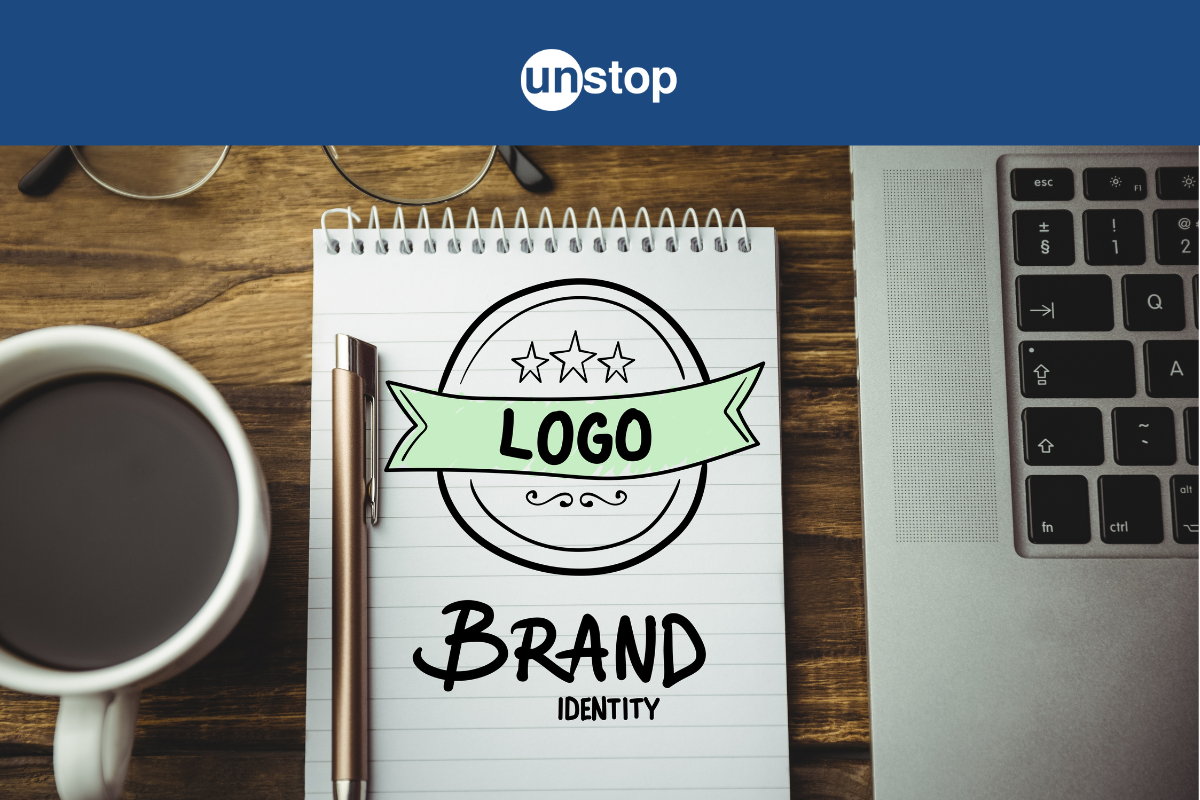
Isn’t it interesting that a jingle or a colour scheme is all it takes for you to recognize a specific brand amongst hundreds of others? From the brand name and logo to packaging design and brand voice, every element plays a crucial role in shaping the overall brand image. A distinctive brand allows businesses to differentiate themselves from competitors and make a powerful and lasting impression on consumers. Consistent brand identity is essential in establishing a visual brand that resonates with customers.
In this article, we will understand how a well-crafted brand identity not only represents a company's values and personality but also fosters customer loyalty and trust.
What is Brand Identity?
Brand identity encompasses the visual, verbal, and emotional aspects that distinguish a brand. It is the combination of elements such as the logo, colours, typography, tagline, and brand voice that come together to create a unique identity for a company or product. A well-defined brand identity plays a crucial role in helping consumers recognize and connect with a brand. Beyond just visuals and words, an effective brand identity creates an emotional connection with its audience.
It represents not only what a company offers but also how it wants to be perceived by consumers. It conveys trustworthiness, reliability, innovation, or any other desired attributes that resonate with its target market. A strong and well-executed brand identity can differentiate a business from its competitors in crowded markets while fostering customer loyalty and advocacy.
What are the Key Components of Brand Identity?
Let us study some of the key components of a brand identity:
Logo
The logo is the visual symbol or emblem that represents the brand. It’s often the most visible aspect of a brand and is used across all brand communications and marketing materials.
Color Palette
The colours chosen for a brand are crucial as they evoke emotions and create associations. For example, blue often conveys trust and reliability, while red can evoke passion or urgency.
Typography
The fonts and typefaces used in brand communications contribute to the overall feel and readability of the brand’s message. Typography can convey different tones, such as formal, casual, modern, or traditional.
Imagery
The style of images, illustrations, or graphics that a brand uses is an important part of its identity. Consistent imagery helps reinforce the brand’s message and values.
Tagline/Slogan
A tagline is a short, memorable phrase that encapsulates the essence of the brand or its promise to consumers. For example, Nike’s “Just Do It” is a powerful and motivational tagline that aligns with the brand’s identity.
Tone of Voice
This refers to the way a brand communicates with its audience. It includes the language, style, and attitude conveyed through written and spoken communication. A brand’s tone of voice might be authoritative, friendly, playful, or professional, depending on its target audience and values.
Packaging
For product-based companies, packaging is a critical part of brand identity. The design, materials, and information on packaging contribute to how the brand is perceived.
Website & Online Presence
A brand’s website and social media profiles are important digital representations of its identity. The design, content, and user experience should all be consistent with the brand’s overall image.
Brand Story
The narrative behind a brand, including its history, mission, vision, and values, forms a core part of its identity. An appealing brand story can create an emotional connection with the audience.
Customer Experience
Every interaction a customer has with a brand, from purchasing to customer service, shapes their perception of the brand. Consistency in these experiences reinforces the brand identity.
Importance & Benefits Of Brand Identity
To be a brand that is second to none, it goes beyond just having a recognizable logo or catchy tagline. A powerful brand identity sets the tone for the entire business, creating a lasting impression on consumers.
Let's explore some of the importance and benefits that come with developing a strong brand identity.
Differentiation
Having a strong brand identity helps businesses differentiate themselves from their competitors. It allows them to establish a unique position in the market and showcase their distinct personality and values.
By standing out from the crowd, companies can attract more attention and gain an edge over others vying for consumer attention.
Consistency
Brand identity ensures that a company's message is consistent across all channels. This consistency builds trust and reliability, as consumers know what to expect from the brand.
Emotional Connection & Brand Loyalty
A well-established brand identity fosters customer loyalty by creating an emotional connection with consumers. When people develop a resonance with a brand's values and beliefs, they are more likely to become loyal customers who keep coming back for more.
This emotional bond builds trust, making customers feel like they are part of something bigger than just purchasing products or services.
Perceived Value
A cohesive and well-executed brand identity can enhance the perceived value of a product or service. Consumers often associate a strong brand identity with quality and are willing to pay a premium for it.
Marketing Effectiveness
A clear and compelling brand identity makes marketing efforts more effective. It provides a framework for creating marketing materials that resonate with the target audience.
Increases Credibility & Trustworthiness
Consistency in branding is essential for building credibility and trustworthiness in the eyes of consumers. A brand that delivers its promises consistently gradually establishes itself as reliable and trustworthy. This leads to increased customer confidence, which translates into higher sales and long-term success.
Enhances Recognition and Recall
Consistency in branding also enhances recognition and recall among target audiences. When people see consistent visual elements such as logos, colours, or fonts associated with a particular brand, they are more likely to remember it later when making purchasing decisions. This familiarity builds trust and makes it easier for customers to choose one brand over another.
A successful brand knows how to leverage its strong identity to gain a competitive advantage in the market. By setting themselves apart from competitors, fostering customer loyalty, increasing credibility, and enhancing recognition among target audiences, businesses can position themselves for long-term success.
Importance of Unique Visual Elements in Brand Identity
Visual identity plays a crucial role in establishing a strong brand identity. The use of unique visual elements is essential for businesses to stand out from the competition and create a lasting impression on their target audience.
Consistency and Recognition
Consistency in visual branding helps build recognition among consumers. When a brand consistently uses specific visual elements such as logos, colour palettes, typography, and design assets across all platforms, it becomes easily recognizable. This recognition fosters trust and loyalty among customers.
Differentiation and Uniqueness
Unique visual elements set a brand apart from its competitors. By incorporating distinctive visuals into their brand identity, companies can create a memorable and distinctive image that resonates with their target audience. This uniqueness helps them carve out a niche in the market and establish themselves as leaders in their industry.
Tangible Representation of Brand Values
Visual elements serve as tangible representations of a brand's values and personality. Colours, fonts, and design choices can evoke specific emotions or convey certain qualities associated with the brand. For example, vibrant colours may represent energy and excitement, while clean lines may signify professionalism and reliability.
Increased Brand Value
A well-crafted visual identity enhances the perceived value of a brand. When businesses invest time and effort into creating visually appealing assets that align with their overall brand strategy, they communicate professionalism, quality, and attention to detail to their customers.
Communication Style and Tone of Voice in Brand Identity
In brand identity, communication style and tone of voice are essential elements that shape how a brand interacts with its audience. The communication style refers to the overall approach and manner in which a brand communicates, whether it is formal, casual, or somewhere in between.
The tone of voice, on the other hand, relates to the emotional quality and personality expressed through the brand's messaging. It can be friendly, authoritative, playful, or any other tone that aligns with the brand's values and target audience. Consistency in communication style and tone of voice helps establish a strong and recognizable brand identity.
Can you change your brand identity? Yes, a company can change its brand identity, but it is a strategic and often complex process that involves making deliberate changes to various elements that contribute to how the brand is perceived. Changing a brand identity is not without risks. Companies must carefully consider the potential impact on existing customers, as well as the potential to attract new ones. A poorly executed brand identity change can confuse consumers, erode trust, and damage the brand's reputation.
Steps on How to Create a Brand Identity
To create a memorable brand identity, there are several steps you can follow. These steps will help you build a strong foundation and ensure that your brand stands out from the competition.
Conduct Thorough Market Research
Before diving into the process of developing your brand identity, it's essential to conduct thorough market research. This step involves understanding your target audience's preferences, needs, and desires. By gaining insights into their behaviour and demographics, you can tailor your brand identity to resonate with them effectively.
Define Your Unique Value Proposition
One of the key building blocks of a memorable brand is having a unique value proposition. This sets your brand apart from competitors and highlights what makes it special. Take the time to identify and articulate what makes your brand different and why customers should choose you over others in the market.
Create a Compelling Visual Identity
Visual elements play a crucial role in shaping brand perception. Designing an eye-catching logo, selecting an appropriate colour palette, and choosing suitable typography all contribute to creating a compelling visual identity. These visual elements should align with your brand's personality and values while capturing attention and leaving a lasting impression on your audience.
Develop Consistent Messaging
Consistency is key. Ensure that your messaging remains consistent across all communication channels, including social media, website content, advertising campaigns, and customer interactions. This consistency reinforces your brand's personality and helps establish familiarity with your target audience.
By following these steps for developing a memorable brand identity, you can create a strong foundation that resonates with your target audience while setting yourself apart from competitors.
Brand Identity Example- Coca-Cola
Let's delve deeper into the details of brand identity using a prominent brand example- Coca-Cola:
Slogan- A Promise to Refresh
The slogan of Coca-Cola has changed several times over the years, reflecting different themes and marketing strategies. One of the most iconic and long-standing slogans is "Taste the Feeling." This slogan, introduced in 2016, emphasizes the emotional connection and enjoyment that comes with drinking Coca-Cola.
With another catchy phrase, 'Open Happiness,' introduced in 2009, they have effectively communicated their promise to bring joy and refreshment to consumers worldwide.
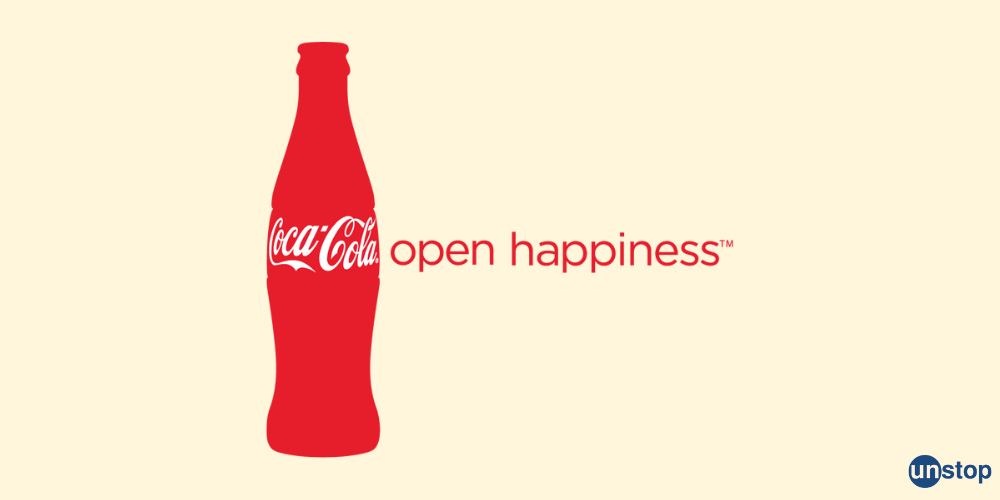
Typeface & Image: Recognizable and Timeless
One of the key elements of Coca-Cola's brand identity is its distinctive typeface and image. The company's logo features a unique script font that has remained virtually unchanged for over a century. This consistency in typography has contributed to the brand's recognizability and timelessness.
Color Palette: Red, White, and Happiness
The choice of colours plays a crucial role in shaping a brand's identity. Coca-Cola has successfully utilized a vibrant red colour throughout its branding materials, evoking feelings of energy, excitement, and happiness. Combined with white accents, this colour palette creates a visually appealing and instantly recognizable look.
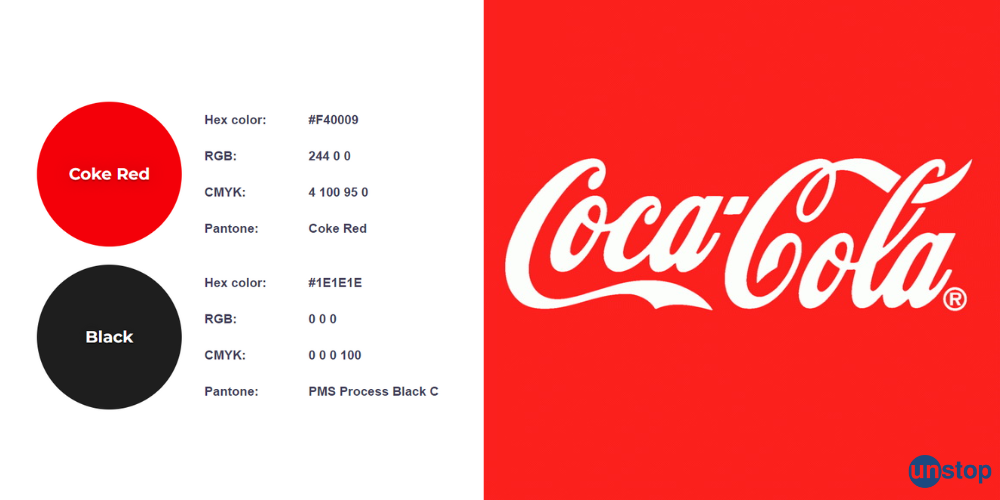
Shapes: Curves that Spark Joy
In addition to colours, shapes also contribute to the overall brand identity. Coca-Cola incorporates smooth curves in its logo design and packaging, creating an aesthetically pleasing visual appeal. These curves symbolize happiness and enjoyment while reinforcing the brand's friendly persona.
Tone: Friendly and Inclusive
Coca-Cola's brand identity is further reinforced through its tone of communication. The company adopts a friendly and inclusive approach in its marketing campaigns, aiming to connect with people from all walks of life.
By using relatable language and showcasing diverse groups of individuals enjoying their products together, Coca-Cola portrays itself as a beverage for everyone.
Adapting to Changing Consumer Needs
While maintaining consistency is vital for building a strong brand identity, Coca-Cola has also demonstrated adaptability over time. They have introduced new product lines such as Diet Coke and Coke Zero Sugar to cater to changing consumer preferences without compromising their core values or diluting their brand identity.
The Coca-Cola brand identity encompasses more than just a logo or packaging. It is a combination of the right image, colours, shapes, and tone that resonates with people around the world. By understanding the needs and desires of its consumers, Coca-Cola has successfully built a brand promise centred on refreshment, happiness, and inclusivity.
Examples of Strong Brand Identities in Different Industries
India is home to a diverse range of industries, each with its own set of brands that have established strong identities. These brands have successfully carved their niche in the market and have become leaders in their respective industries. Here are some examples of Indian brands with strong brand identities:
Tata Group
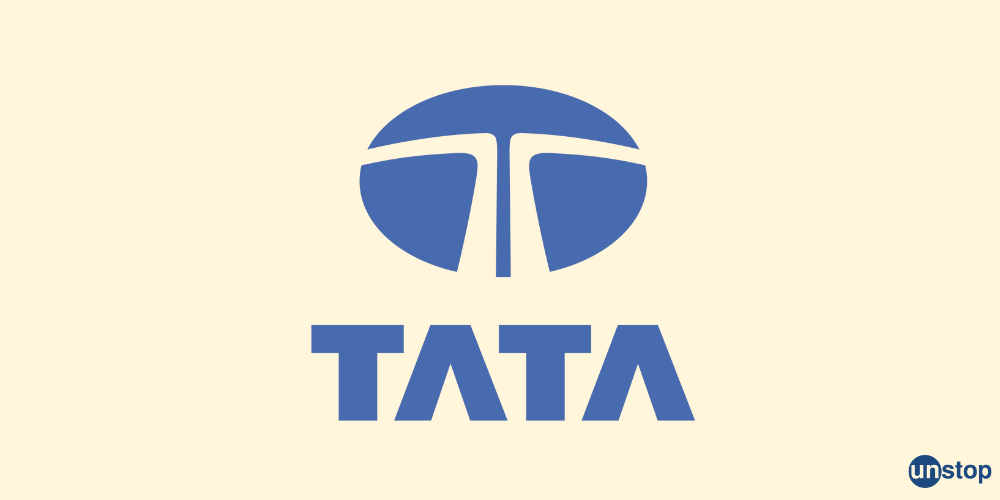
Tata Group is one of India's oldest and most respected conglomerates. With a presence in industries such as automotive, steel, telecommunications, and hospitality, Tata has built a strong brand identity based on trust, reliability, and social responsibility. The Tata logo, a symbol of the stylized letter 'T,' is instantly recognizable and represents the group's commitment to innovation and excellence.
Mahindra & Mahindra
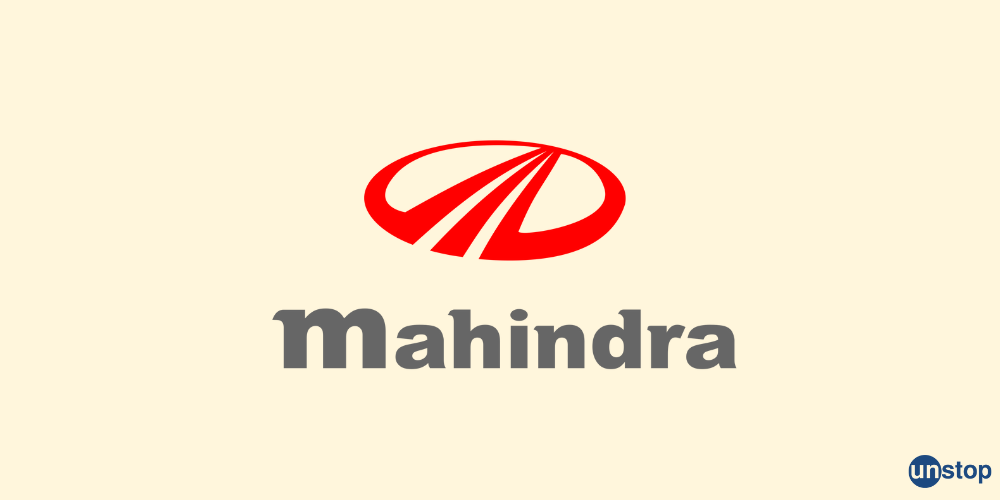
Mahindra & Mahindra is a leading Indian automobile manufacturer known for its rugged and reliable vehicles. The brand's identity is centered around its tagline, "Rise," which reflects its commitment to push boundaries and overcome challenges constantly. Mahindra's strong brand identity has helped it gain a loyal customer base and establish itself as a trusted name in the automotive industry.
Flipkart
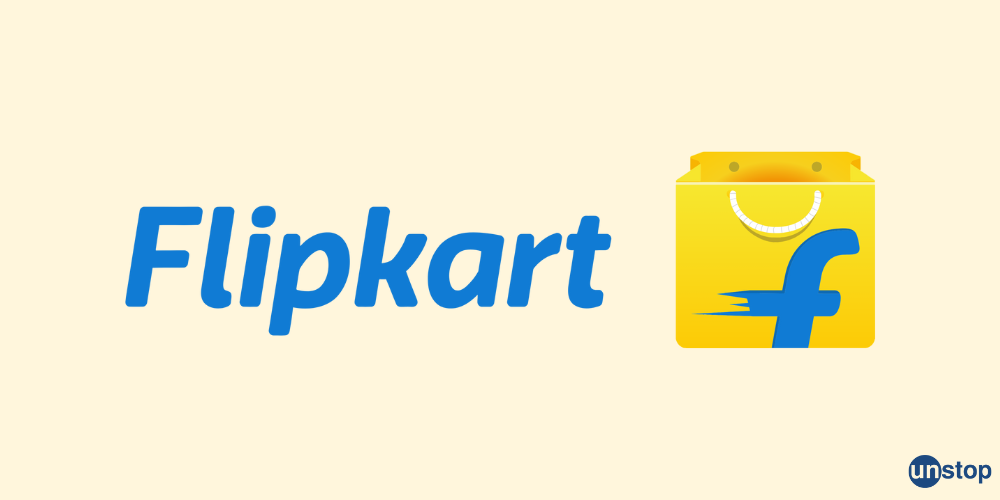
Flipkart is India's largest e-commerce marketplace and has played a significant role in revolutionizing online shopping in the country. Flipkart's brand identity is built on its customer-centric approach, offering a wide range of products, competitive prices, and reliable delivery services. The brand's logo, a stylized letter 'F,' is simple yet impactful, representing Flipkart's commitment to making online shopping accessible and convenient for all.
Royal Enfield
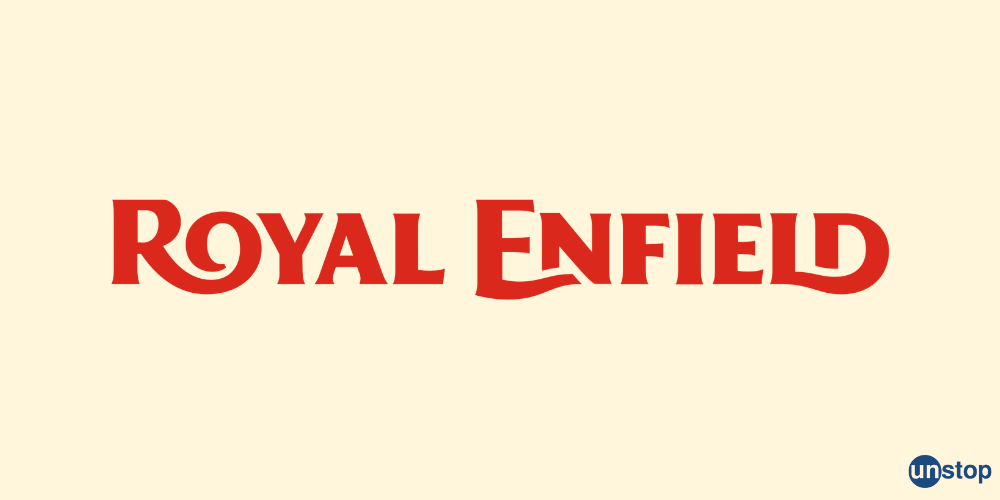
Royal Enfield is a legendary brand in the motorcycle industry, known for its classic and timeless designs. The brand's identity is built on its rich heritage and association with adventure and freedom. With its distinctive thumping sound and iconic logo, Royal Enfield has created a strong emotional connection with motorcycle enthusiasts. The brand's commitment to craftsmanship and quality has made it a symbol of style and authenticity in the industry.
Titan
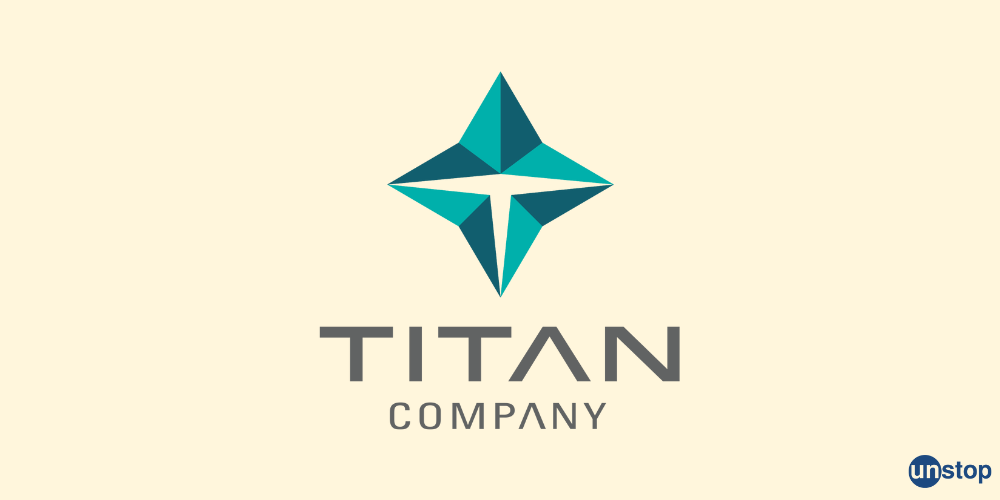
Titan is a leading watch and jewellery brand in India, known for its innovative designs and impeccable craftsmanship. The brand's identity is centred around its tagline, 'Be More', which encourages individuals to embrace their uniqueness and strive for excellence. Titan's wide range of products caters to different tastes and preferences, making it a trusted choice for consumers. The brand's logo, a stylized letter 'T' with a crescent moon, represents elegance and sophistication.
Dabur
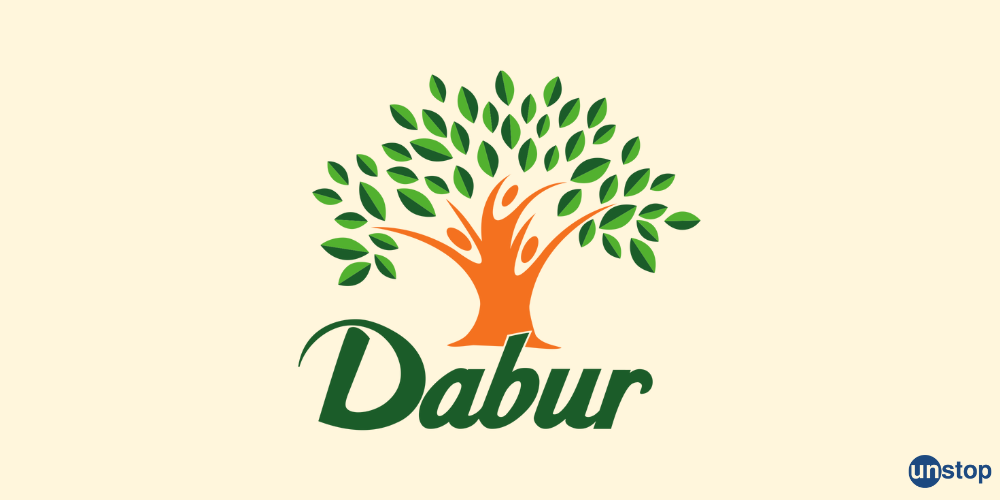
Dabur is a renowned Indian brand in the healthcare and personal care industry. The brand's identity is built on its Ayurvedic heritage and natural ingredients. Dabur's products, such as Chyawanprash and Dabur Amla hair oil, have become household names known for their effectiveness and quality.
The brand's logo, featuring a banyan tree, symbolizes strength, longevity, and natural goodness, reflecting Dabur's commitment to holistic well-being.
Pidilite Industries
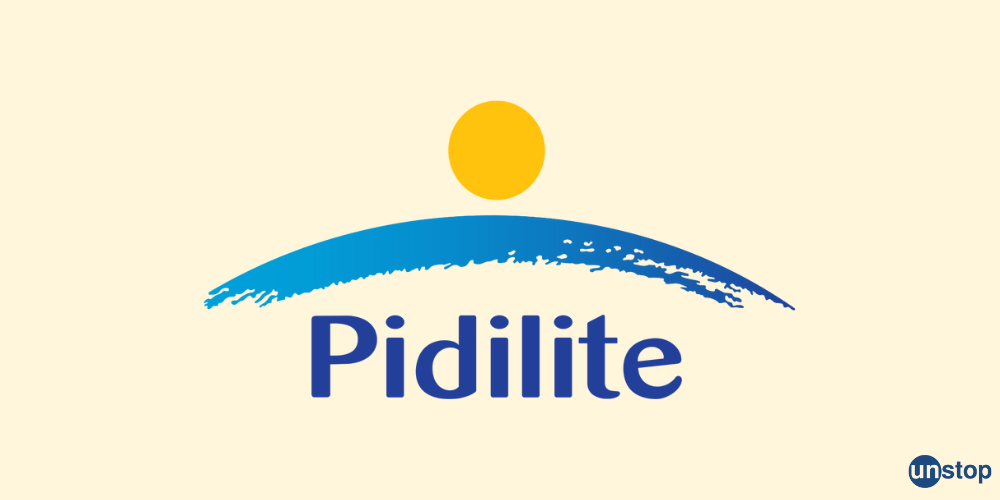
Pidilite Industries is a leading adhesive and construction chemical manufacturer in India. The brand's identity is centred around its tagline, ‘Everywhere, Every Need,’ highlighting its wide range of products that cater to diverse industries and applications.
Pidilite's strong brand identity is built on its commitment to innovation, quality, and customer satisfaction. The brand's logo, featuring a hand holding a tube of adhesive, represents trust and reliability.
Consistency in Online and Offline Branding
Finally, let us study some of the important touchpoints that a brand can utilise to build effective connections with its customers:
Social Media: A Powerful Tool for Consistent Branding
Social media platforms provide an excellent opportunity to maintain consistent branding across online and offline channels. By using the same brand elements, such as logos, colours, and messaging, businesses can reinforce their brand identity and create a cohesive experience for customers. Whether it's posting engaging content or responding to customer inquiries, social media allows brands to showcase their unique personality consistently.
Email Marketing: Extending Your Brand Identity
Email marketing is another effective way to ensure consistency in branding. By incorporating your brand's visual elements into email templates, you can create a seamless experience for recipients. Consistently using your logo, fonts, and colour palette in email campaigns helps reinforce your brand identity and increases brand recognition among subscribers. Maintaining a consistent tone of voice in your email communication further strengthens your brand image.
Website: The Digital Face of Your Brand
Your website serves as the digital face of your business and plays a crucial role in maintaining consistent branding. From the design layout to the content style, every aspect should align with your brand identity. Using consistent visual elements throughout the website enhances recognition and builds trust with visitors. It also ensures that customers have a seamless experience when transitioning from online to offline interactions with your brand.
Loyalty Pays Off: The Long-Term Benefits of Consistent Branding
Consistency in both online and offline branding efforts has long-term benefits for businesses. When customers encounter a consistent brand experience across different touchpoints, they develop trust and loyalty towards the brand. This loyalty translates into repeat purchases, positive word-of-mouth referrals, and even advocacy on behalf of the brand. By consistently reinforcing its unique value proposition through branding efforts across various channels, a business gains an edge over competitors.
Conclusion
In conclusion, in today's competitive business landscape, establishing a strong brand identity is crucial for small businesses and startups. A well-defined brand identity not only helps differentiate a company from its competitors but also builds trust, credibility, and recognition among consumers. By conveying a clear message about what the business stands for and the value it offers, a strong brand identity can attract customers and foster long-term loyalty.
Investing time and effort into developing a strong brand identity is essential for small businesses and startups seeking to thrive in today's competitive market. By clearly communicating their unique value proposition through compelling visuals and consistent messaging, these businesses can establish themselves as trustworthy industry players while attracting loyal customers. It is important for entrepreneurs to prioritize building their brand identity as it serves as the foundation upon which successful marketing strategies are built.
Quiz Time!!!
Frequently Asked Questions (FAQs)
1. What are some common challenges in developing a brand identity?
Developing a brand identity can pose several challenges for small businesses and startups. One common challenge is defining the target audience accurately. Without understanding who their ideal customers are, businesses may struggle to create branding that resonates with them effectively. Another challenge lies in maintaining consistency across various touchpoints such as websites, social media profiles, packaging materials, etc., which requires careful attention to detail.
2. How long does it take to develop a strong brand identity?
The timeline for developing a strong brand identity varies depending on several factors, including the complexity of the business, the level of market research required, and the availability of resources. On average, it can take several weeks to a few months to develop a comprehensive brand identity that aligns with the business's goals and resonates with its target audience.
3. Can a strong brand identity help attract investors?
Yes, a strong brand identity can indeed attract investors. Investors are often drawn to businesses that have a clear understanding of their target market and possess a unique value proposition. A well-defined brand identity demonstrates professionalism, credibility, and potential for growth, making it more appealing to potential investors.
4. How often should a company review and update its brand identity?
Regularly reviewing and updating a company's brand identity is essential to stay relevant in an ever-evolving market. While there is no fixed timeline for this process, businesses should consider revisiting their branding strategy whenever there are significant changes in their industry or target audience preferences. As companies grow and expand their offerings or enter new markets, they may need to adapt their brand identity accordingly.
5. What role does storytelling play in brand identity?
Storytelling plays a crucial role in building an emotional connection between businesses and consumers. By weaving compelling narratives into their brand messaging, businesses can engage customers on a deeper level and create memorable experiences. Storytelling helps communicate the values, mission, and purpose behind the business while humanizing the brand and fostering trust among consumers.
Suggested Reads:
Brand Management: Definition, Strategies, Principles & Benefits Explained
Brand Positioning: A Step-by-Step Guide To Crafting The Perfect Strategy
Alekhya Chakrabarty is a father, a doodler, a trivia buff, a sports fanatic and a lifelong student of marketing. Alekhya is the VP of Marketing & Growth at Unstop, the engagement and hiring platform which connects students and graduates with opportunities. He has over a decade and a half of experience in driving revenue and building brands with the likes of Nestle, HUL and ITC. He is an alumnus of IMT Ghaziabad and in his last stint he was leading the marketing function at Sunstone, a higher education startup. Alekhya has been recognised as a ‘Top Voice’ on LinkedIn for Digital Marketing & Brand Management. He runs a marketing podcast titled East India Marketing Company to drive conversations around growth, content, culture and commerce.
Login to continue reading
And access exclusive content, personalized recommendations, and career-boosting opportunities.
Subscribe
to our newsletter
















Comments
Add comment